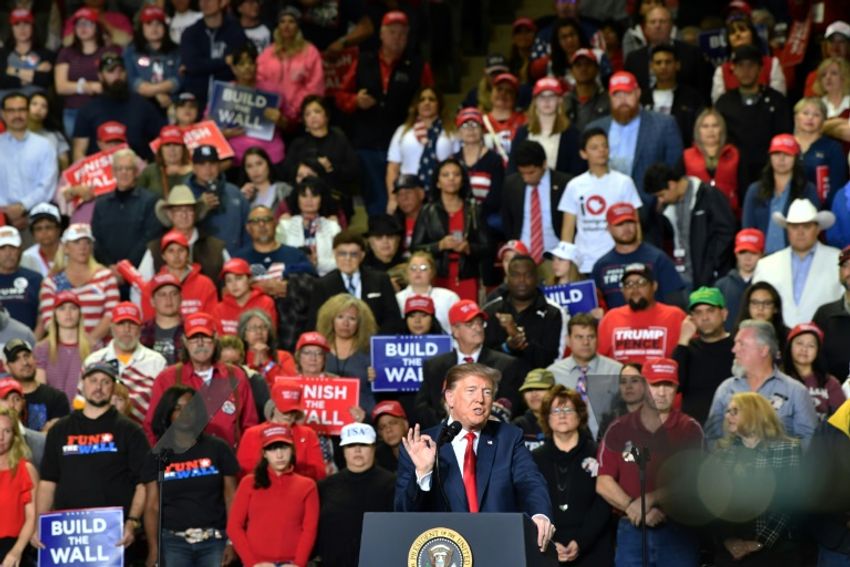
America’s New Strategy To Curb China’s Growing Influence
COLD WAR
But the high-level Sino-American talks on the margins of the G20 Summit is unlikely end the trade wars, which reflect America’s gradual return to the Cold War strategy used to contain the Soviet Union.
In his brand new book, The Rise and Fall of Peace on Earth (2019), Michael Mandelbaum, Professor of American Foreign Policy at of John Hopkins School of Advanced International Studies argues that in the new multipolar world, a new containment strategy “offers the best chance to defend American interests in the twenty-first century.”
America’s gradual return to a refurbished form of containment signals the end of “the most peaceful in the modern era” during the quarter century (1989-2014) following the Cold War. China rode on this liberal peace to become the world’s second largest economy. And Africa moved from a “hopeless continent” to an “Africa rising”, a new frontier of growth and development.
But history has changed course, and the world has witnessed the brutal return of Cold War geopolitics.
It is against this background that in 2016, Donald Trump stormed into the world stage as the new face of resurgent populism, isolationism and anti-globalization trends (including tariffs, protectionism and anti-migration policies), which also gave rise to the ‘Brexit movement’ in Britain.
On the campaign trail, Trump vowed that when elected, he would label China a “currency manipulator” and to respond to what he called China’s “theft of American trade secrets” and technology and “unfair subsidy behavior”. He would levy a 45 per cent tariff on Chinese exports.
EXTREME POVERTY
Wary that war would undermine its development, China has insisted on a peaceful rise. After 40 years of reform and opening up, Beijing is weaving a powerful system of economic interdependence to counter containment. In this system, the United States is dependent on China to finance its deficits while China depends on America to buy its exports.
At the heart of China’s growing power is the Belt and Road Initiative (BRI), “one of the most ambitious development projects in human history”, it unveiled in 2013.
This trillion-dollar global economic framework is increasingly becoming the main artery of world economy, rapidly improving connectivity, promoting financial integration, policy coordination, unimpeded trade, and fostering people-to-people bonds. In 2018, as Beijing convened the Second Belt and Road Forum, over 150 countries and international organizations and nearly two-thirds of the world’s population were involved in the infrastructure and investments under the initiative.
According to recent studies by the World Bank, when completed BRI transport projects will reduce “travel times along economic corridors by 12 per cent, increase trade between 2.7 per cent and 9.7 per cent, increase income by up to 3.4 per cent and lift 7.6 million people from extreme poverty”.
Because of China’s expanding economic and security footprint in Africa, the continent is at the vortex of the new containment strategy policy towards China being pushed by pundits and populists.
The 2018 Summit of Forum for China-Africa Cooperation (FOCAC) aligned the Belt and Road Initiative with Africa’s development blueprints, mainly the development strategies of African countries, African Agenda 2063 and the United Nations 2030 Agenda for Sustainable Development.
SUPERPOWER RIVALRY
Under the refurbished framework, China is supporting Africa’s eight development priorities: industrial promotion, infrastructure connectivity, trade facilitation, green development, capacity building, healthcare, people-to-people exchange, and peace and security.
Since 2000, China has committed a whooping $143 billion to fund Africa’s development priorities. This includes $23 billion in the 2000-2014 period, $60 billion in 2015 and another $60 billion in 2018, the largest-ever flow of external funding to the continent, way larger than the US Marshall Plan to Europe.
Kenya’s 470 kilometre Mombasa-Nairobi Standard Gauge Railway, Kenya's biggest infrastructure project since independence, is one of the showpieces of the BRI success. Completed in June 2017 and valued at $3.2 billion, Kenya’s rail line has reduced the journey from 12 hours on the old railway to 4.5 hours. It has boosted the country's GDP by 1.5%, created 46,000 jobs for locals and trained 1,600 railway professionals. Nigeria’s first-ever standard gauge railway from Abuja to Kaduna was completed in July, 2016, connecting cities and economic hubs.
However, China’s growing economic and security footprint in African has pushed superpower rivalry to a new high. By last year, China had over 2,000 peacekeepers in five missions in Africa. It has provided a total of $100 million as military assistance to the African Union’s Standby Force and rapid response capacity. Since 2011, China has dispatched 29 escort task groups involving 88 vessels and 23,000 solders to combat piracy off the Somali coast in the Indian Ocean. It has supported IGAD-led peace processes in South Sudan.
DIGITAL PLATFORMS
In the wake of the March 2018 FOCAC Summit in Beijing, Africa witnessed an unprecedented blitz against China’s role in Africa especially on digital platforms. Sino-phobia hit an all-time high. China was characterized as a neo-colonial power or as setting up a giant “debt trap” for the recipient of its development support.
Beyond America’s new containment policy, Africa needs empirical research to provide data to enable policymakers, media and the public make evidence-based assessments of the Belt and Road Initiative.

